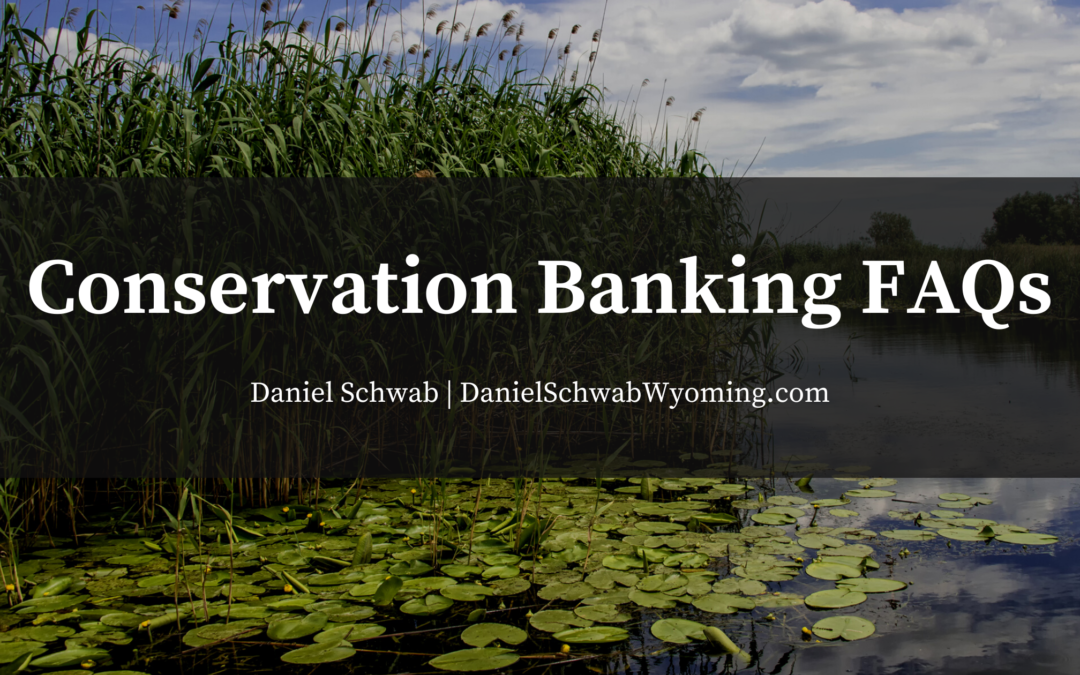I founded TerraWest Conservancy in 2012. My goal with this company is to establish mitigation and conservation banking that preserve, restore, and enhance wildlife habitat.
I have found that we are often asked about conservation banks: what it is, the purpose, the benefit, etc. So I wanted to write a blog post focusing on frequently asked questions regarding conservation banking.
What is a conservation bank?
A conservation bank is a parcel of land containing significant natural resource values that are conserved and managed. This is done for an endangered or sensitive species, typically in perpetuity, according to the Endangered Species Act (ESA). The bank is protected through a series of deed restrictions or conservation easements, managed according to an adaptive Long-Term Management Plan (LTMP), and funded through a non-wasting endowment account. The bank is operated by a bank sponsor and receives habitat credits to satisfy the mitigation requirements within the bank’s Geographic Service Area (GSA).
What is the purpose of a conservation bank?
The purpose of a conservation bank is to offset negative impacts to in-kind natural resources occurring on non-bank lands. A bank is large enough to create landscape-scale conservation measures and accommodate the mitigation requirements of multiple projects within a specific GSA.
What is the difference between a conservation bank and a conservation easement?
A bank utilizes a conservation easement; however, a bank has advantages over a standalone easement. A bank has assurances and durability that are filed and permitted with the endowment account, strict monitoring requirements, and long-term obligations by the landowner to ensure the success of the mitigation site. The bank also transfers liability from the state and the project proponent (the developer) to the bank sponsor.
Who certifies the bank and how long does it take to permit?
Conservation banks are permitted through an Interagency Review Team (IRT), which is made up of both state and federal wildlife agencies. Species that are protected under the ESA require federal approval through the United States Fish & Wildlife Service (USFWS). Species that are managed under state jurisdiction are approved through the state’s game and fish or wildlife agency. In Oregon, the permitting agency is the Oregon Department of Fish & Wildlife (ODF&W).
How long is the land preserved?
Under federal jurisdiction, conservation banks are required to be in perpetuity. Some states have authorized term credit banks. This means a bank’s protections have a specified term and then expires. A term bank can operate with species that are under state jurisdiction. However, if and when the target species revert to federal regulations, term banks will no longer be an acceptable form of mitigation. This could transfer all liability back to the state. Therefore, I believe the best approach is to provide durable and perpetual species recovery because perpetual habitat credits offer the greatest number of protections against future threats.
How does a conservation bank affect ranching operations?
For sage grouse and obligate species, grazing and agricultural operations play an essential role in the success of the LTMP. The LTMP is adaptive and requires constant monitoring and surveying to ensure a positive state and objectives, such as grazing rotations, haying, irrigation, and other ranching methods.
Who purchases habitat credits?
Any development that causes exceedance or surpasses required thresholds with negative impacts to sensitive, general, or core area habitat may be required to mitigate for the negative impacts. This may include renewable and nonrenewable energy projects, transmission and pipeline developments, surface and subsurface mining operations, commercial and residential developments, roadway expansions, and other forms of anthropogenic disturbances.
How does a conservation bank benefit the county? The state?
Conservation banks provide states the ability to approve construction permits for necessary energy developments while simultaneously complying with local and statewide Resource Management Plans (RMPs). Another key advantage of a bank is its ability to offer preventative conservation measures, preserving and managing the land years before any negative impacts occur elsewhere. On a local level, cooperative efforts between a bank sponsor and the applicable counties can lead to community-level improvements by funds generated from the sale of habitat credits.
Although this summary merely scratches the surface of conservation banking, it reveals the need for further discussion between states, local municipalities, and organizations like TerraWest Conservancy. Our shared long-term stewardship goals can be realized through partnered, landscape-scale conservation strategies.
For more information, please feel free to reach out to my team at any time. We have the goals and ability to provide solutions to many of the environmental issues affecting local, state, and federal challenges arising from project development.


